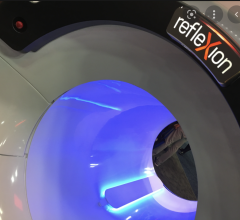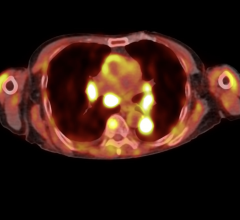December 3, 2007 - Treating throat cancer with intensity modulated radiation therapy (IMRT) can improve the health-related quality of life of patients compared to conventional radiation therapy (CRT), according to a study in the December issue of the International Journal for Radiation Oncology*Biology*Physics, the official journal of the American Society for Therapeutic Radiology and Oncology.
Oropharyngeal cancer, sometimes referred to as throat cancer, is a cancer that develops in the part of the throat located just behind the mouth, called the oropharynx. This includes cancer in the tonsil and in the back of the tongue. Squamous cell carcinomas, originating from the cells that normally form the lining of the mouth and throat, account for more than 90 percent of oropharyngeal cancers. In recent years, there is a trend for younger people and nonsmokers to develop this cancer.
The focus of the study, conducted by the University of Iowa Department of Radiation Oncology and Department of Otolaryngology – Head and Neck Surgery, was to compare the health-related quality of life outcomes of patients diagnosed with oropharyngeal cancer treated with IMRT versus CRT.
“It is important for patients to be able to preserve the quality of life they had before they were diagnosed and began treatment for cancer,” said Min Yao, M.D., Ph.D., lead author of the study and an associate professor at the University of Texas Southwestern Medical School Department of Radiation Oncology. “This study will be invaluable for patients diagnosed with oropharyngeal squamous cell carcinoma who are weighing treatment options because now they know that IMRT can offer them with better quality of life.”
CRT aims two or three external radiation beams at the tumor. Large amount of adjacent normal organs, including the oral cavity and salivary glands, receive radiation doses as high as the tumor. The salivary glands are totally destroyed by the radiation and some patients suffer from severe mouth dryness with poor quality of life.
IMRT is a new technology that is different from CRT. It uses multiple radiation beams that are broken up into many smaller beamlets. This allows radiation oncologists to precisely target the radiation to the tumor and spare the adjacent normal structures from high doses of radiation. The functions of these structures, especially the salivary glands, are preserved.
The study involved 53 patients from the database of the Outcomes Assessment Project funded by National Institutes of Health. This is an ongoing longitudinal study initiated more than 10 years ago to prospectively collect outcome data from individuals diagnosed with carcinomas of the upper aerodigestive tract. Twenty-six of the study’s patients were treated with IMRT, and 27 were treated using CRT.
The data used in the study were collected before treatment began and at 3, 6 and 12 months after treatment ended. Participants were also required to complete quality of life surveys, which scored patients’ eating, speech, aesthetics (e.g. changes in their physical appearance), and social disruption (e.g. changes in how they interact with others) during the various time points.
The study found that at 12 months after treatment ended, the patients treated with IMRT had better health-related quality of life in all four scored areas; however, the greatest difference in quality of life between the two treatment groups was seen in eating. Patients treated with IMRT were found to have improvement in their eating six months after treatment and continued to improve during the first 12 months after treatment. Patients who received CRT continued to deteriorate after six months with minimal improvement after 12 months.
For more information: www.astro.org


 November 11, 2025
November 11, 2025 









